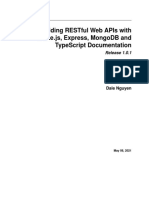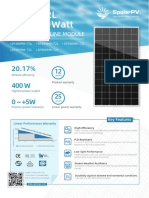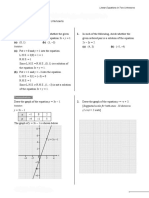0% found this document useful (0 votes)
39 views6 pagesMERN Simple Project
This document provides a step-by-step guide to building a Task Manager App using the MERN stack, which includes React.js for the frontend, Express.js and Node.js for the backend, and MongoDB for the database. It outlines the folder structure, backend and frontend setup, and instructions for running the application locally. Additionally, it offers bonus ideas for enhancing the app and installation instructions for MongoDB on different operating systems.
Uploaded by
AIM TechnologiesCopyright
© © All Rights Reserved
We take content rights seriously. If you suspect this is your content, claim it here.
Available Formats
Download as DOCX, PDF, TXT or read online on Scribd
0% found this document useful (0 votes)
39 views6 pagesMERN Simple Project
This document provides a step-by-step guide to building a Task Manager App using the MERN stack, which includes React.js for the frontend, Express.js and Node.js for the backend, and MongoDB for the database. It outlines the folder structure, backend and frontend setup, and instructions for running the application locally. Additionally, it offers bonus ideas for enhancing the app and installation instructions for MongoDB on different operating systems.
Uploaded by
AIM TechnologiesCopyright
© © All Rights Reserved
We take content rights seriously. If you suspect this is your content, claim it here.
Available Formats
Download as DOCX, PDF, TXT or read online on Scribd
/ 6



























































































